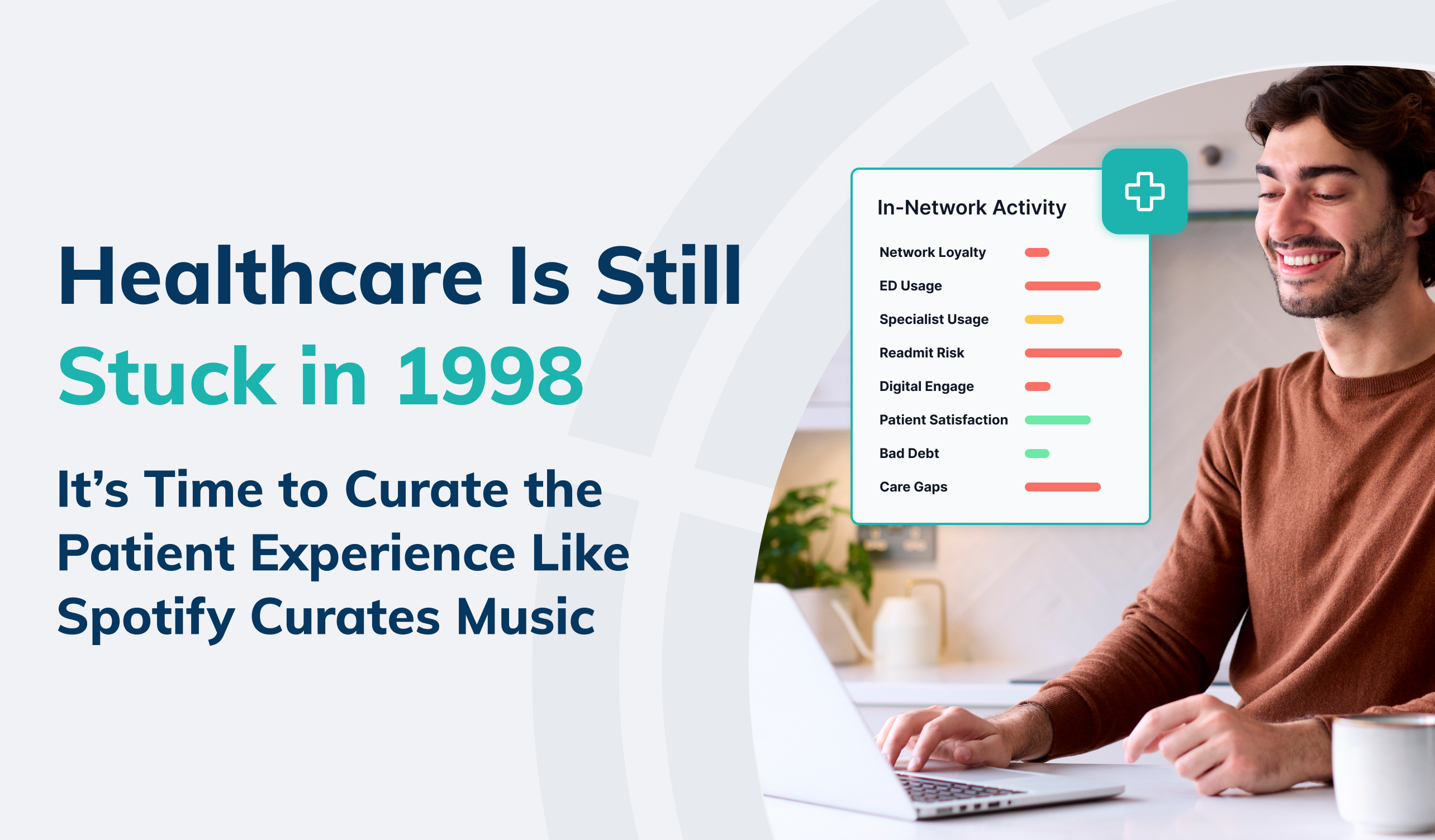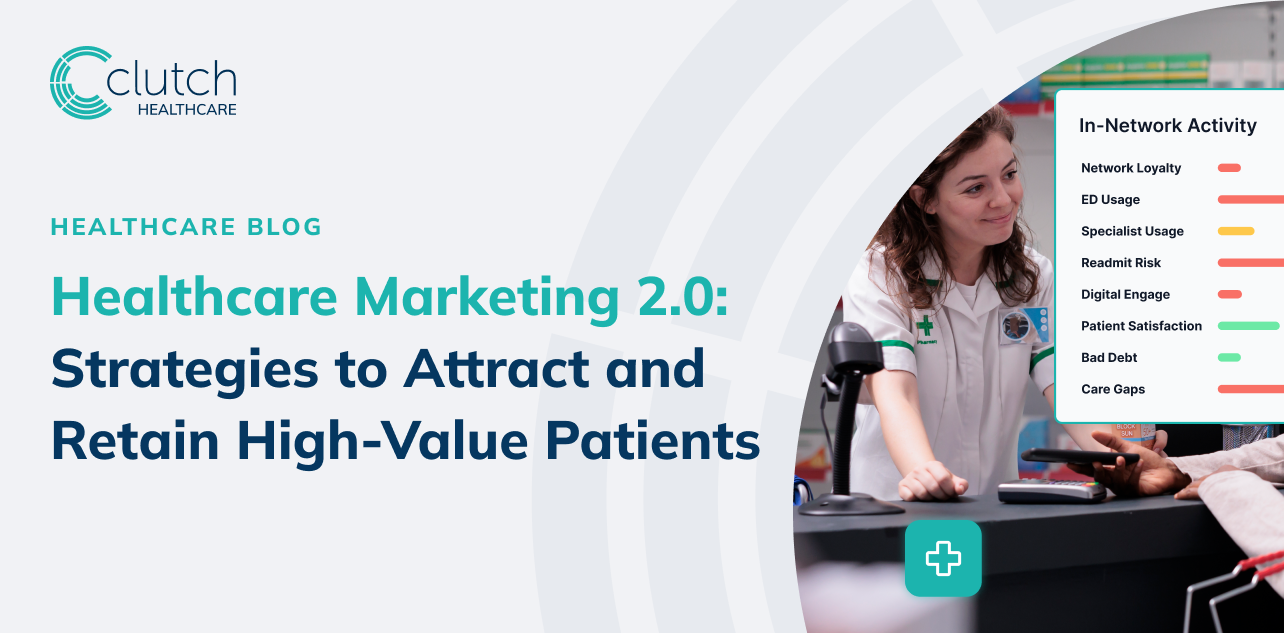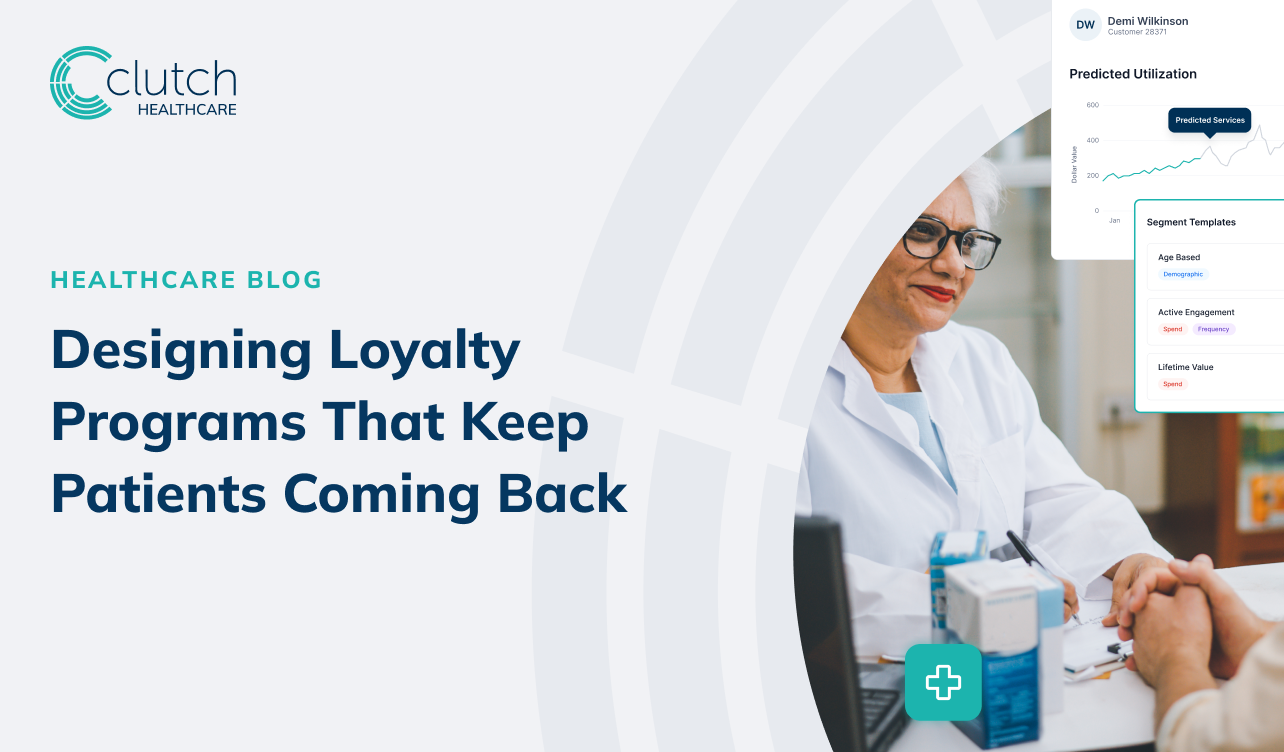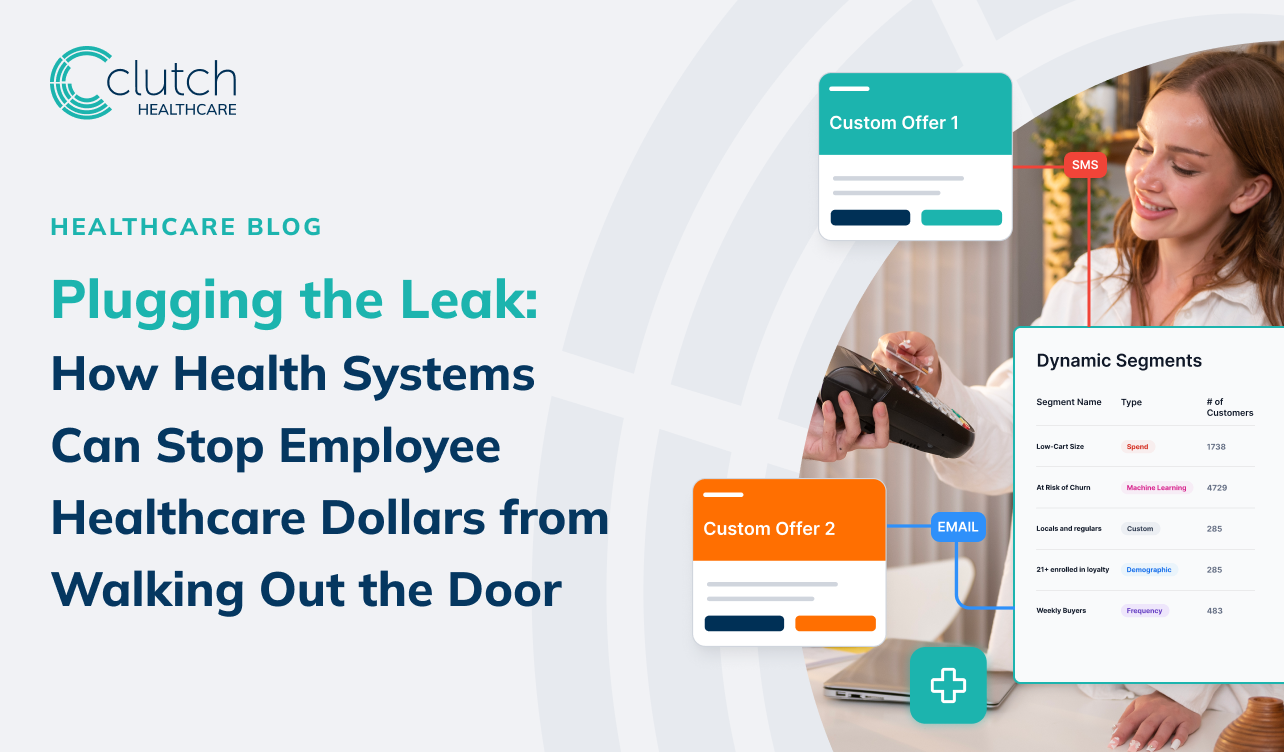Healthcare Is Still Stuck in 1998: It’s Time to Curate the Patient Experience Like Spotify Curates Music

Introduction: Healthcare Engagement Is Broken
Let’s get real for a moment: if healthcare were a retail brand, it would have gone bankrupt a decade ago. Imagine if Amazon only sent generic newsletters, ignored your preferences, and asked you to fax in your return request. That’s the level of "engagement" most patients and members experience today in healthcare - let’s be honest, no consumer in their right mind would tolerate it anywhere else.
While some forward-thinking healthcare companies are starting to understand the importance of advancing engagement methods, many still treat engagement like a compliance checkbox instead of what it should be: the core engine of outcomes, loyalty, and long-term value. Meanwhile, retail and consumer companies wrote the playbook a decade ago on how to predict, personalize, and actually influence behavior.
The result? Patients tune out. Members churn. Preventable costs explode. And the system keeps spinning its wheels, clinging to outdated tactics that belong in a file cabinet, not a digital world. And, in the end, this erodes trust in the system and works against loyalty.
So, here’s the radical idea: what if healthcare stole the tools and tactics from the companies that are actually good at engagement?
It’s time to move from "outreach" to curation.
From Demographics to Decisions: The Rise of Behavioral Modeling
Retail doesn’t just know your name and zip code. It knows when you’re most likely to buy, what colors you prefer, how long you linger on a product page, and what offer will nudge you to convert.
That’s not magic. It’s behavioral modeling.
Behavioral modeling combines historical data, real-time signals, and psychological profiles to predict what someone is likely to do next. In retail, that might be buying a new pair of shoes. In healthcare, it could be whether a member will refill their statin, show up for a mammogram, or ignore an appointment reminder.
The power of behavioral modeling is that it doesn’t treat people as categories—it treats them as dynamic individuals. A 42-year-old woman with asthma who opens emails on Tuesdays, skips calls, but replies to SMS within 10 minutes? That’s not a persona. That’s a profile. And it’s actionable.
When healthcare systems and health plans use behavioral modeling, engagement stops being a broadcast. It becomes a signal-driven system, just like Amazon's recommendation engine.
Micro-Segmentation: The End of "One-Size-Fits-All" Medicine
Let’s be blunt: most healthcare segmentation strategies are lazy.
"Male, 50-64, with hypertension" is not a segment. It’s a census category.
In contrast, leading consumer companies create micro-segments that account for lifestyle, digital behaviors, income volatility, health literacy, motivation level, and more. These segments aren’t fixed—they’re fluid, evolving as the individual’s context and behaviors change.
This kind of segmentation allows for radically more relevant communication. A diabetic patient who is digitally engaged, food insecure, and anxious about cost needs a completely different outreach strategy than a diabetic patient who is affluent, privately insured, and focused on weight loss.
Micro-segmentation means no more sending the same postcard to a thousand people. It means sending the right message to the right person in the right tone at the right time.
It’s surgical. It’s scalable. And it’s overdue in healthcare.
Hyper-Personalization: When Healthcare Acts Like Spotify
Why can Spotify create a personalized playlist for you every Monday, but your health plan can’t send you a care reminder that reflects your actual needs?
Hyper-personalization isn’t just personalization with lipstick. It’s the ability to tailor every element of the experience—from subject lines to care pathways—based on individual data and real-time context.
Imagine a system that:
- Knows your preferred communication channel and timing
- Understands your cultural and linguistic preferences
- Predicts when you’re most likely to engage
- Nudges you with tailored incentives based on your actual motivators
This already exists in fintech, ecommerce, entertainment. Why not healthcare?
Hyper-personalization turns patient engagement into something dynamic and respectful. It makes members feel seen, not sorted. These are the foundations of loyalty.
The Punchline: Stop Broadcasting. Start Curating.
Retail brands don’t just throw products at you. They curate your experience. Every scroll, every tap, every click teaches the algorithm something about who you are and what you want.
Healthcare must do the same.
Curated healthcare isn’t a buzzword. It’s a mandate. It means:
- Using behavioral insights to predict engagement
- Building micro-segments that evolve with each interaction
- Deploying hyper-personalization to guide, not just inform
When we curate the healthcare experience, we stop asking patients to navigate a maze and start guiding them down a personalized path.
The future of healthcare engagement isn’t about sending more messages. It’s about sending the right ones, in the right sequence, with the right relevance.
Healthcare doesn’t need more tech. It needs more intentionality. It’s time to stop pushing information and start designing journeys.
Because if Spotify can figure out what song you want to hear next, your health plan should be able to figure out when to remind you about your colonoscopy.
Let’s raise the bar. Let’s curate the healthcare experience!



